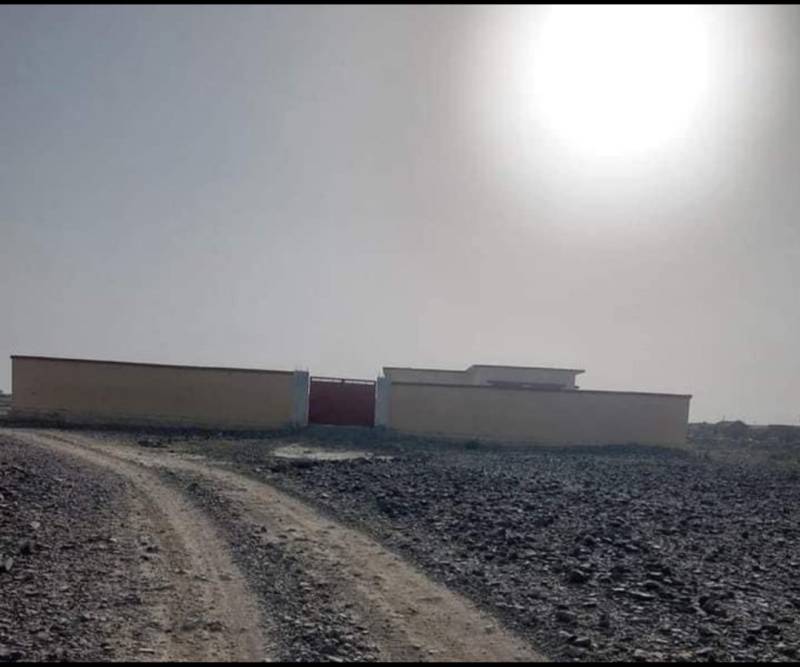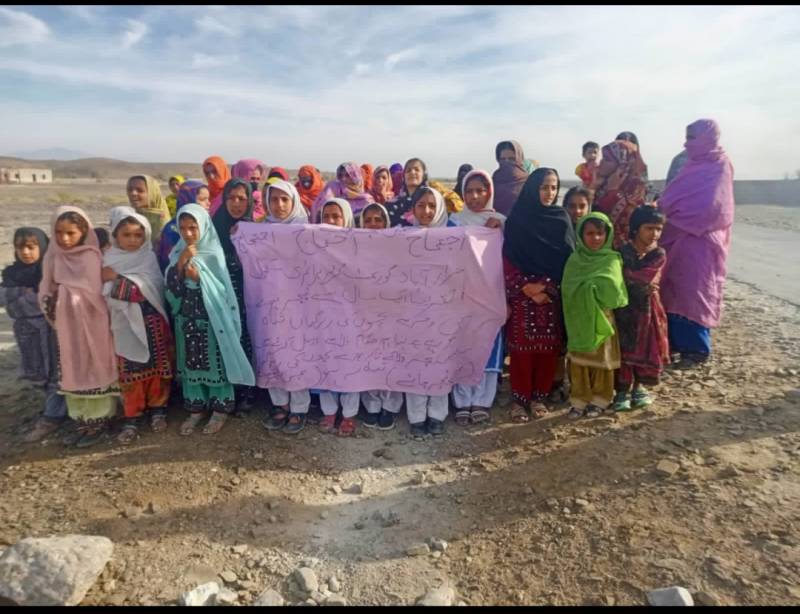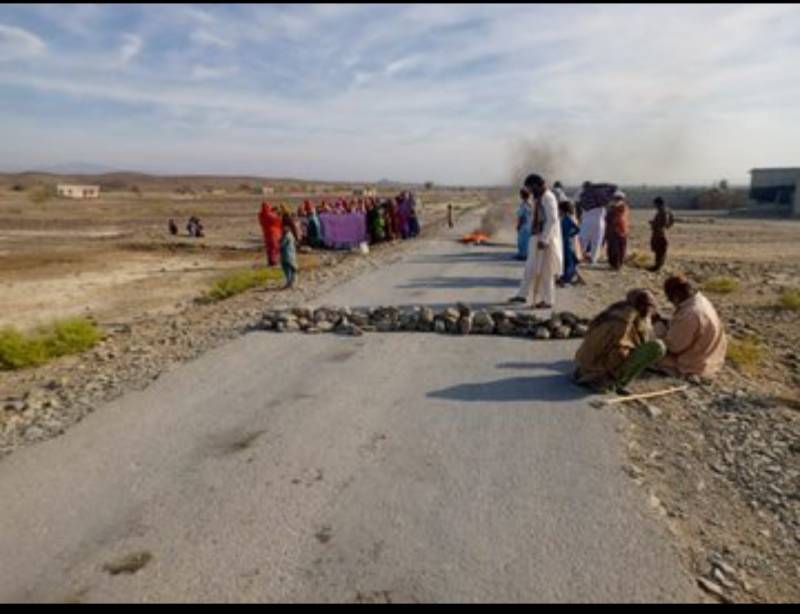In the vast expanse of Balochistan, where the arid desert meets the rugged mountains, lies the district of Awaran. While its natural beauty is undeniable and its name might not echo loudly in the corridors of power, but for those familiar with its realities, Awaran witnesses the struggle against underdevelopment, particularly in education.
"Do you know what Awaran is famous for?" Dr. Zubair Baloch, a second-year MBBS student from Awaran, posed this question to me one afternoon as we sat in the bustling cafeteria of Bolan Medical College in Quetta. My answer was prompt - underdevelopment.
Whenever we sit to discuss about social and political problems of the most restive region of the country, my fellows would often term Awaran as the ‘dark district of Balochistan.’
Two days after our discussion at the varsity, the students from the Primary School of Mazarabad in Awaran staged a protest, blocking a road near the school. The reason? The school had been dysfunctional for years due to a acute shortage of teaching staff, classrooms, and basic amenities. Surprisingly, the school had 120 students enrolled, with a significant number being female.
Gulnaz, Dr. Zubair's 10-year-old sister, participated in the protest under the Baloch Literacy Campaign, an initiative by the Baloch Student Action Committee (BSAC) aimed at highlighting the educational challenges in the region.
"The school had only one teacher and a single classroom," she lamented. "After the teacher retired, the school has been closed for two years now."
In the 2017 census, the district’s population was 121,6,500, being tagged the label of the most backward district in the country. Despite Awaran’s significant population and historical prominence, having produced Balochistan’s Chief Minister twice—Abdul Quddos Bezinjo—the district faced significant challenges.
The Pakistan National Human Development Report of the same year ranked Awaran with the lowest Human Development Index (HDI) score in the country, at 0.173. Additionally, Alif Ailaan’s 2017 District Education Rankings placed Awaran 137th out of the 141 districts of the country.
Statistics from various reports of Balochistan Education Management Information System (BEMIS) paint a grim picture: out of the total 380 public sector primary, middle, secondary, and higher secondary schools operating in the district, 99% are located in urban areas and only a meagre 1% in rural areas, leaving the rural communities undeserved and under-looked.
“Everybody in Awaran desires change. Shahbir Rakshani is among the voices advocating for change. He, along with other volunteers, made efforts by engaging with various officials, including the District Education Officer, MPAs, the education secretary of Balochistan, and Awaran-based Chief Minister of Balochistan, Abdul Quddos Bezanjo and those who are the part of the system, but unfortunately, with no fruitful outcomes,” said Dr. Zubair.
Shahbir Rakshani started a social media campaign , the Balochistan Education System, on October 23, 2019. Thanks to his effort that, out of the total 380 schools, 192 were found to be dysfunctional.
The BEMIS report also highlights that Awaran is home to 24,356 out-of-school children aged 6 to 15, comprising 51% of the total school-going age population. Dropout rates are even higher at the middle and secondary school levels, with rates of 61% and 68%, respectively.
Another report by the Pakistan Alliance for Girls Education (PAGE) also reveals a gender disparity in education access. For example, 69% of females and 39% of males aged 6 to 15 are out of school while from the ages of 6 to 10 , 64 % of females and 29% of males are absent throughout the year. This gap widens as students progress beyond primary level, with 51% of males and 74% of females aged 11-13, and 59% of males and 83% of females aged 14 to 15 are out of school.
Along with gender disparity, the schools in the district are grappling with the harrowing lack of infrastructural equipment such as potable water, furniture, electricity and boundary walls. According to PAGE, 76% of the schools lack boundary wall, 90% of them have no toilets while none of the schools has access to electricity and potable water for girls.
The district's schools struggle with ghost teachers. Shahbir identified 210 teachers to not show up on duty. The district also houses 86 primary schools with a single teacher and 15 primary schools with only a single room.
“The government teachers get more salary than a common private school teacher earns. Half of the salary is either given to the higher authorities to maintain their attendance or to a person to show up in their places while they spend the rest of the salary in living in Quetta or Karachi or start businesses elsewhere,” said Shafique Ur-Rehman, a political science Awarani student from the Balochistan University points out.
The relationship between politicians and ghost teachers is entrenched. Ghost teachers find patronage in politicians, who shield them from accountability. In return, these teachers serve as political organisers in rural and urban areas and polling agents during elections. While teacher absenteeism is high in government schools, because teachers who live in far away places are absent more, especially female teachers who don’t have an independent mode of transport.
“Teachers from these 192 closed schools are also seen performing non-teaching duties like anti-polio and anti-dengue drives, elections or government surveys and during census,” said Dr. Zubair. An Alif Ailaan report also brazenly emphasises that government teachers spend a quarter of their teaching career on non-teaching activities.
As per as Dr. Zubair, the educational crisis in Awaran is a political anomaly that jeopardises the future of 121,6,500 people. To address this pressing issue, the government must prioritise appointing the Education Secretary and District Education Officer (DEO) of Awaran to conduct a thorough assessment to identify dysfunctional schools and allocate sufficient budgets for their proper functioning, including prosecuting those involved in corrupt practices. The ghost teachers’ problem could slightly be mitigated by introducing biometric [verification] system for teachers’ attendances.
As per as reports, the Balochistan government received more than 7 trillion rupees from the Public Sector Development Programme (PSDP) in the last five years. With 65 members in the provincial Assembly, each member received more than 7 billion rupees when divided equally. Despite Awaran receiving more than 7 billion rupees, the district continues to have a bunch of dysfunctional schools, lack of electricity and a deteriorated healthcare sector, leaving one to wonder, where did this amount go?




